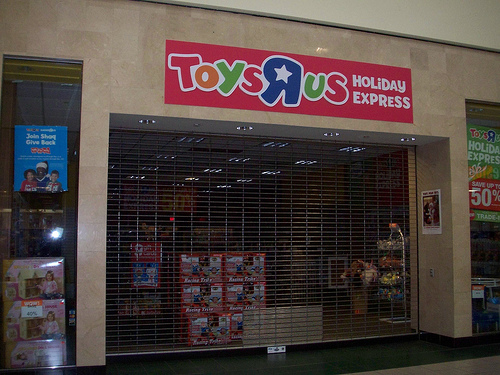Though there is some disagreement over whether a successful entrepreneur is born or made, the truth is that starting a company with a solid background in business-related skills and information will always help. But getting a good business education does not mean you have to fork over thousands of dollars for an MBA. You can get much of the information you need to know by doing your own research.
What follows is my personal list of eleven of the most essential books you should read whether you are thinking of starting your own business or you are already running one. There are plenty of business books out there, and some of them are really popular. But just because they are popular does not mean they are so good. I’ve found that many of the so-called “must read” books are often anything but that. Instead, they are a waste of time and money.
This list is fluff-free. If you study the publications below, you’ll walk away with almost every you need to know about starting and running a business today including: time management, marketing, business management, networking, and business success strategies.
1. Getting Things Done, David Allen
In Getting Things Done, David Allen offers a practical system for organizing all of the various actions on your “to-do” list and how to handle all the bits of information that need attention and/or tracking. He also covers how to effectively capture your thoughts, set up your workspace to maximize productivity, create an effective filing system, and how to monitor your progress.

2. How to Win Friends and Influence People, Dale Carnegie
This book was first published almost 75 years ago and it continues to be a definitive guide for building successful relationships. Though it is not specifically a business book per se, the lessons and ideas contained within are essential to forming successful business relationships in every aspect- from your customers to your business partners and investors. The book’s central theme is that all people have a deep psychological and emotional need to feel special or important. With this guiding principle in mind, Dale Carnegie offers techniques for interacting with people and making people like you, as well as ways to win people to your way of thinking without arousing resentment.
3. The 7 Habits of Highly Effective People, Stephen Covey
Like, How to Win Friends and Influence People, mentioned above, The 7 Habits of Highly Effective People is not specifically a business read, but it is an essential handbook for successfully dealing with yourself and other people. What Covey does is offer a new prospective- or what he calls “paradigm shift” -on how you view yourself and your influence in the world starting from the inside-out. His seven habits include: being proactive, beginning with the end in mind, putting first things first, thinking win/win, seeking to first understand before being understood, synergizing the whole process, and finally seeking continuous renewal of your efforts from the ground up.

4. The Art of the Start, Guy Kawasaki
If you are just starting your business and you are looking for outside investment then The Art of the Start, by Guy Kawasaki is for you. There is a wealth of practical, no-nonsense tips to starting your business, attracting investors, and in general keeping both yourself and your business goals focused.
5. The Personal MBA, Josh Kaufman
As the name implies, what Kaufman attempts to do in his book, The Personal MBA, is cull all the essential knowledge and concepts needed to successfully start and operate a business while skipping a costly, formal MBA program. In my opinion, he does it pretty successfully. Not only does he tackle the standard business topics, such as marketing, sales, management, and finance, but he also has a well-written section on self-development and working with other people. Additionally, he includes a pretty extensive list of sources to obtain more information if it is needed.
6. Permission Marketing, Seth Godin
The world has changed over the past twenty years or so. People are dealing with an information overload and are jaded by meaningless relationships. What once could draw a customer’s attention has now become ignored at best and annoying at worst. In Permission Marketing, Godin teaches you how to turn “strangers into friends and friends into customers,” by attracting your customers’ attention with something truly valuable and worthwhile (such as a free sample or a contest) and then getting their permission to continue on. This book will definitely change the way you think about marketing your products or services.

7. All Marketers Are Liars, Seth Godin
In All Marketers Are Liars, Godin explains that in order to be successful in marketing today, you need to learn how to tell a believable, memorable story about your product or service. But to do that effectively you need to be in touch with the attitudes and purchasing behaviors of your target market. It’s traditional marketing in a modern environment.
8. Linchpin: Are You Indespensable?, Seth Godin
In Linchpin, Godin delves into the topic of being indispensable at work- irregardless of if you work for someone else or if you work for yourself. In today’s rapidly changing environment, where the new can quickly become obsolete, Godin encourages the reader to look for opportunities to add value at work in ways that no one else can do. In essence you turn yourself into an indispensable linchpin. This is a highly inspirational read.
9. The E-Myth Revisited, Michael Gerber
Many people who decide to go into business for themselves naturally choose to do something that draws on what they enjoy and are good at doing. But countless times the enthusiasm wears off quickly as these new entrepreneurs come to the realization that running a business is not what they thought it would be. This is where The E-Myth Revisited, by Micheal Gerber steps in. In his book, Gerber clearly explains what is going wrong by using the story of Sarah, the owner of a struggling pie bakery, and then offers practical tips for how to deal with it. The writing in this book is a bit dated at times, but it is definitely worth a read, especially if you feel like your business is hitting a wall.
10. Built to Last, Jim Collins, Jerri Porras
Built to Last, by Jim Collins and Jerri Porras is a well-written, well-documented look into what makes some companies great, while others fade into mediocrity. In the book, Collins and Porras profile several visionary companies, such as 3M, HP, Procter & Gamble, and Walmart and then compares them to similar less successful companies in the same industry and time period. They also present and shatter twelve common myths people have about visionary companies, such as: it takes a great idea to start a great company; visionary companies require great and charismatic visionary leaders; and highly successful companies make their best moves by brilliant and complex strategic planning.

11. Networking Like a Pro: Turning Contacts into Connections, Ivan Misner, David Alexander, Brian Hillard
Networking Like a Pro, is a very practical and relevant handbook on the art of business networking. The book covers a wide-range of networking topics including: The Networking Mind-Set; Your Networking Strategy; Networking Face to Face; Making Your Network Work; Secrets of the Masters; and Is Your Networking Working? Each of theses topics is clearly explained and supported by step-by-step instruction, examples, and diagrams.






















